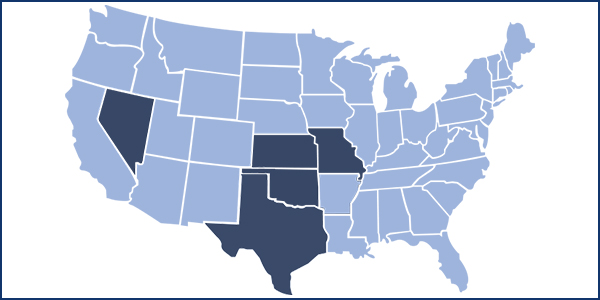FERC last week rejected GridLiance High Plains’ proposal to conduct local transmission planning for nonpublic SPP utilities outside of the company’s service territory (ER20-3025).
The commission found in its Feb. 2 order that GridLiance’s proposal to perform the service for “transmission-dependent nonpublic utilities (TDNPUs)” would contradict its rules on local transmission planning, “which obligate the transmission provider to plan for the needs of transmission customers in its individual retail distribution service territory or footprint.”
GridLiance’s proposal would have allowed a transmission customer to conduct its own competing local transmission planning, FERC said, contrary to Order 890’s transmission-planning obligations. The commission disagreed with the company’s contention that its proposal would not give TDNPUs more rights to plan and develop local transmission facilities than they already have.
FERC said that while Order 890 requires that transmission customers “be allowed timely and meaningful input and participation into local transmission planning, it did not provide that transmission customers could establish their own transmission-planning processes and did not require that transmission customers be allowed to plan on a coequal basis with transmission providers.”
The commission said GridLiance’s proposal could not constitute a “local transmission-planning process” as defined by Order 1000 because the company would be performing planning outside of its own retail distribution service territory or footprint. Local transmission facilities resulting from the proposal would not meet the order’s definition of a “local transmission facility” because the facility would be located outside of GridLiance’s service territory or footprint.
FERC also found SPP’s tariff “does not contemplate third parties conducting competing local transmission-planning processes for customers within another transmission provider’s service territory or footprint,” noting the RTO does not have processes “designed to resolve different outcomes arising from the competing processes.”
“Without a clear system in place to resolve different outcomes arising from competing local transmission-planning processes, GridLiance’s proposal could increase conflicts and litigation … in SPP,” the commission said.
GridLiance, which collaborates with municipal utilities, joint action agencies and electric cooperatives to address transmission needs, disagreed.
“We are obviously disappointed,” GridLiance High Plains President Brett Hooton said in an email to RTO Insider.
He pointed to Commissioner Allison Clements’ concurrence with the order, saying, “Inadequate transmission planning is at the root of many of the problems leading to less reliable service for TDNPUs. As Commissioner Clements noted, reform is needed for more effective local transmission planning, including ‘mechanisms to address barriers to participation’ in local transmission-planning processes.”
In her concurring statement, Clements noted the grid has undergone “significant transformation” since Order 890 was issued almost 15 years ago.
“Consideration of reform to local planning processes is appropriate as part of broader transmission planning reform, to ensure that TDNPUs are given fair and adequate service,” she wrote, “and more broadly to ensure that all transmission system plans — local, regional and interregional — succeed in identifying cost-effective solutions to established system needs and thereby ensure that any new infrastructure is money well spent by customers.”
Clements said mechanisms similar to GridLiance’s proposal “may be appropriately considered as part of a broader discussion on transmission planning reform.”
“We perform transmission planning for our utility partners and believe our local planning process expansion would benefit other TDNPUs,” Hooton said. “While FERC didn’t accept our proposed solution in this case, we will continue our efforts to address inequities in transmission service to, as described by Commissioner Clements, ‘ensure TDNPUs are given fair and adequate service.’”
FERC offered a potential alternative, saying TDNPUs could always contract with GridLiance and other entities to study their local transmission needs and potential projects to address those needs, using that information to “inform their participation in the existing local and regional transmission planning processes.”
GridLiance said it had already executed planning agreements with three TDNPUs: Kansas Power Pool, Oklahoma Municipal Power Authority and Tri-County Electric Cooperative. It said that while it currently can conduct transmission planning outside of its local planning process, there is not a clear process for including identified transmission projects in the SPP process.
Western Farmers Electric Cooperative and Xcel Energy Services, on behalf of Southwestern Public Service Co., protested in the docket, arguing the proposal lacked sufficient detail regarding coordination with the incumbent transmission owner’s local planning process; that it would result in duplicative planning efforts; and that it did not explain how inconsistent planning results would be resolved.






